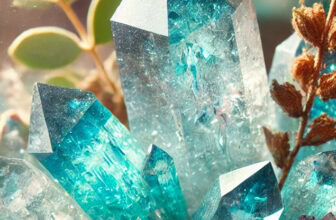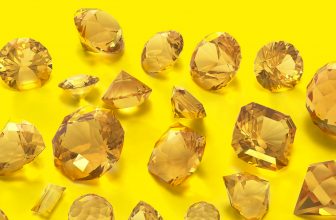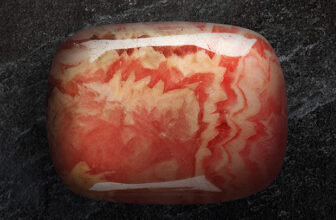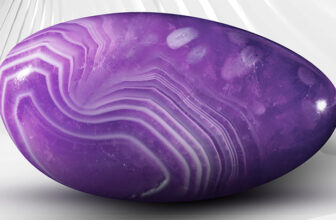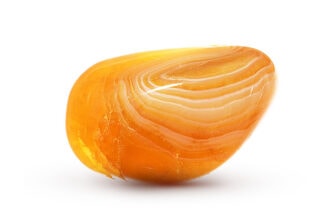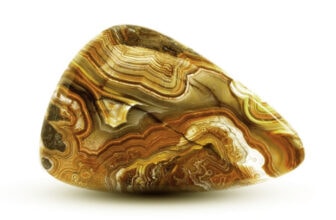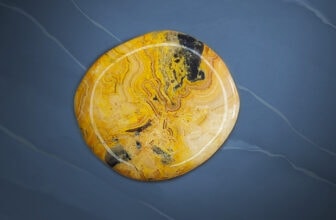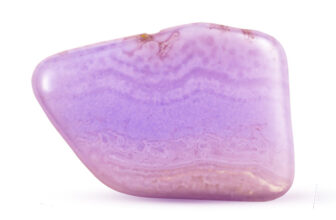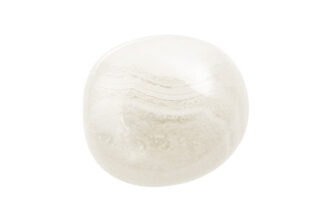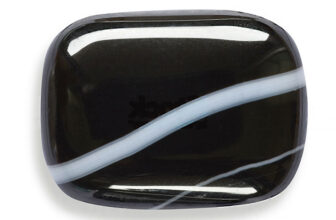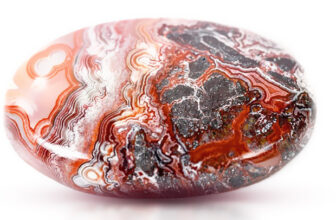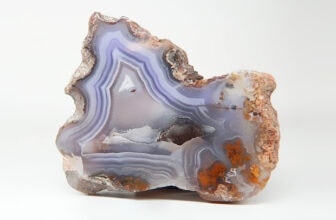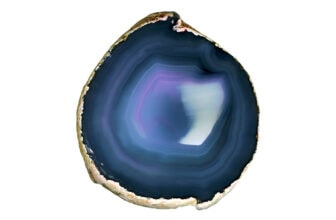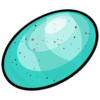Cradled Calm: The Subtle Power of Palm Stones
 Ever found yourself fidgeting with a pen or tapping your fingers when you’re anxious? There’s something deeply human about needing to touch something when the mind starts to spin. That’s where palm stones come in – smooth, oval-shaped gemstones designed to fit perfectly in the curve of your hand. They’re sometimes called touchstones, worry stones, or even thumb stones, and their appeal lies as much in their soothing feel as in their natural beauty.
Ever found yourself fidgeting with a pen or tapping your fingers when you’re anxious? There’s something deeply human about needing to touch something when the mind starts to spin. That’s where palm stones come in – smooth, oval-shaped gemstones designed to fit perfectly in the curve of your hand. They’re sometimes called touchstones, worry stones, or even thumb stones, and their appeal lies as much in their soothing feel as in their natural beauty.
A palm stone is more than just a polished piece of crystal. It’s a small, tactile anchor. Rounded and silky to the touch, it invites your hand to close around it, to trace its curves, to feel its quiet weight. This simple act – the holding of something cool, solid, and ancient – can help slow racing thoughts and ground scattered energy.
In the world of crystal shapes and forms, palm stones are the bridge between art and purpose. Unlike the gentle irregularities of tumbled stones or the gleaming facets of gems cut for jewellery, a palm stone is shaped for touch. Its design is ergonomic, deliberate – a shape that feels like it belongs in your hand.
From Ancient Talismans to Modern Comfort Stones
Why have people been rubbing smooth stones for centuries? Because it works. The urge to fidget, stroke, or hold something during moments of tension isn’t new – it’s ancient. Long before the modern “palm stone” became a polished staple in crystal shops, humans instinctively reached for nature’s own grounding tools.
The concept of a worry stone traces back thousands of years. In ancient Greece, people carried small, thumb-sized pebbles from the sea. The smoothness – sculpted naturally by waves – made them ideal for rubbing between the thumb and forefinger, a repetitive motion believed to calm the nerves and ease the mind. Similar practices appeared across the globe: Tibetan monks used carved stones during meditation, while Native American tribes held smooth stones as aids for focus, intention, or connection to the earth.
The idea was simple yet profound – that touch could be healing. The motion of rubbing a stone mirrored the rhythm of breathing or chanting, creating a small but powerful meditative ritual. Over time, this practice evolved from spontaneous habit to spiritual tool.
When modern lapidary craft entered the picture, the palm stone was born. Instead of using whatever stones nature offered, artisans began shaping and polishing crystals specifically for handheld use. This brought a new dimension – the energetic properties of gemstones combined with the ancient psychology of tactile comfort.
The Healing Touch: How Palm Stones Support Mind and Spirit
How often do you find yourself feeling scattered – pulled in several directions at once, thoughts racing faster than your breath? Palm stones offer a surprisingly simple counterbalance. They ask nothing of you except touch. Yet in that act of holding – of connecting skin to stone – something shifts.
A palm stone isn’t just pretty; it’s practical in the quietest way. Its smooth, curved form fits easily in your hand or pocket, giving it a kind of stealth comfort. You can use it in a meeting, while commuting, or before sleep. Its shape invites your thumb to glide across the surface – that rhythmic motion grounding the mind much like slow breathing or steady footsteps.
The Power of Touch
There’s a scientific side to this, too. Research into tactile stimulation shows that gentle, repetitive touch activates the parasympathetic nervous system – the part of us responsible for rest, calm, and emotional regulation. In simple terms: when your fingers trace the surface of a palm stone, your body receives the message that it’s safe to relax.
And because many palm stones are made from minerals like amethyst, rose quartz, or jasper, they carry both visual and energetic appeal. Each one feels slightly different – cool or warm to the touch, glassy or softly matte – reminding us that nature’s materials aren’t uniform; they’re alive with texture and variation.
A Tool for Mindfulness and Meditation
Meditation can sometimes feel abstract, like trying to catch the wind with your bare hands. A palm stone gives your awareness something to hold onto. As you sit, breathe, or focus on an intention, the stone becomes an anchor – a tangible reminder to stay present.
For example:
- Hold a labradorite palm stone when you want to focus on transformation or courage.
- Choose rose quartz when working on self-love or emotional healing.
- Use selenite when you need clarity or energetic cleansing.
Oval, Round, or Raw-Edged: Understanding the Styles of Palm Stones
What makes a palm stone so irresistibly touchable? The answer lies in its shape – that perfect harmony of curve, contour, and texture that seems to fit your hand as if it were made for it (because, quite literally, it is).
At its heart, a palm stone is an exploration of form and feel. Each one is carved and polished to create a balance between smoothness and substance, between art and utility. But within that simplicity lies an entire world of variation.
The Classic Shape
Most palm stones follow an oval or gently rounded outline, slightly flattened so they sit comfortably in the palm. This shape allows the fingers to wrap around the stone naturally, creating a soothing ergonomic loop between the hand and the mind. Some are thicker and weightier – perfect for grounding energy during meditation – while others are thin, sleek, and light enough to slip into a pocket unnoticed.
Every curve has a purpose. A perfectly polished surface isn’t just about appearance; it’s about sensation. The way the light glides across its surface, the coolness against the skin, the subtle resistance under your thumb – all of it works together to engage your senses in quiet, mindful awareness.
Variations in Form
While the traditional oval remains the favorite, palm stones also come in free-form and creative shapes. Some are softly triangular or teardrop-shaped, following the natural contour of the rough stone they were cut from. Others are asymmetrical, revealing veins, bands, or pockets of raw texture – imperfections that only make them more personal.
You might also come across palm stones with a thumb indentation, often sold as worry stones. This slight dip provides a resting place for your thumb, enhancing that satisfying rhythmic motion that helps release tension. It’s a design rooted in ancient habits of touch and focus, refined for modern hands.
Sizes for Every Intention
Not all palms – or purposes – are the same. Pocket-sized palm stones are ideal for everyday carry, discreet and comforting when you need grounding on the go. Medium sizes make lovely companions for meditation or energy work, fitting snugly in the hand without strain. And then there are the large display palm stones – polished beauties that draw the eye with swirling patterns and mesmerizing depth, perfect for altars, desks, or bedside tables.
Surface, Texture & Finish
Most palm stones are polished to a high-gloss finish, which enhances color and pattern while creating that irresistibly smooth touch. But not all are mirror-slick – some lapidary artists prefer a satin or matte finish, allowing a softer feel and a more natural look. Occasionally, a craftsman will leave one side partially raw, preserving the stone’s organic edge – a visual reminder that this elegant object began as rough, untamed earth.
The internal patterns of a stone often dictate its final appearance. A slice of banded agate might reveal delicate concentric rings; labradorite may flash with iridescent blues and greens when turned to the light. Even the way light filters through translucent stones like fluorite or selenite gives each palm stone its unique soul.
Special Variations & Collectible Styles
Collectors often seek out palm stones for their individuality. Some feature rare inclusions, such as golden rutile threads in quartz or dendritic fern-like patterns in opalized stones. Others may have unique color zones – a patch of amethyst fading into smoky quartz, for instance – that create one-of-a-kind visual stories within the stone.
From Rough Stone to Silken Finish: How Palm Stones Are Made
Have you ever wondered how a chunk of raw, jagged stone becomes something so smooth it almost seems to hum beneath your fingertips? The transformation from rough mineral to silky palm stone is part craftsmanship, part patience, and part respect for the natural character of the crystal itself.
From Rough Stone to Gentle Curve
Every palm stone begins as a piece of raw gemstone or crystal, selected for its color, durability, and internal patterning. The lapidary – the artisan who shapes and polishes stone – studies the material first, tracing the veins, fractures, and inclusions that hint at how the piece wants to be shaped.
Unlike the precision cuts of faceted gems meant to catch light, the goal here is comfort. The artist visualizes how the stone will rest in the palm – where the curves will meet the fingers, where the surface should be domed or flattened. The process is as much intuitive as it is technical.
Once the outline is marked, the stone is trimmed using a diamond saw. This rough shaping defines the size and general silhouette – usually oval, round, or softly elongated. From there, the piece enters a multi-step journey of grinding, sanding, and polishing.
The Art of Polishing
The lapidary uses progressively finer diamond wheels or belts to grind away imperfections and create smooth, organic curves. Each stage refines the texture, transforming coarse edges into soft contours. This is the part where the stone starts to come alive – where dull surfaces begin to gleam, and colors deepen with every pass.
Water often flows over the wheel during this process, keeping the stone cool and reducing dust – but there’s something poetic about it too. The steady rhythm of wheel and water echoes the natural forces that shaped stones for millennia.
Once the form feels balanced, the stone is hand-sanded and polished, often using ultra-fine grits or polishing compounds like cerium oxide. This final stage gives the palm stone its distinctive glass-smooth finish – that satisfying surface that practically invites touch.
Finishing Touches & Variations
Not all palm stones are polished to the same sheen. Some are finished with a soft satin texture, preserving a more natural feel. Others are double-sided domes, perfectly symmetrical, while some have a flat base that allows them to rest easily on a surface or be used during energy work on the body.
For certain minerals – like selenite, fluorite, or calcite – extra care is required. These stones are softer and can scratch easily, so polishing must be done slowly and gently. The result, however, is luminous: a silky, almost ethereal glow that makes lighter stones look as if they’re lit from within.
Selecting & Working With Your Palm Stones
How do you know which palm stone is yours? With so many shapes, colors, and textures to choose from, selecting one can feel both exciting and overwhelming. But choosing a palm stone isn’t about logic – it’s about connection.
Choosing the Right Palm Stone
Start with the basics: comfort and feel. When you hold a palm stone, notice how it rests in your hand. Does it sit naturally against your palm, or does it feel too bulky, too flat, too sharp at the edges? A good palm stone almost disappears in your grip – its shape and weight melting seamlessly into your hand.
Then, pay attention to surface quality. The polish should be even and smooth, with no rough spots or chips. A gentle sheen is ideal; it invites touch without slipping. Some people prefer the high-gloss mirror finish, while others find the matte or satin texture more organic and grounding.
Next comes the fun part – choosing by energy or aesthetic.
- If you’re drawn to calming, spiritual energy, amethyst or blue lace agate may resonate.
- For warmth and motivation, carnelian or tiger’s eye radiate vibrant, fiery tones.
- For love and emotional healing, rose quartz offers a soft, nurturing energy.
And if you’re unsure? Trust your instinct. The stone that catches your eye, the one you can’t quite put down – that’s often the one you need.
How to Use a Palm Stone
Palm stones can adapt to almost any kind of mindfulness or energy practice. Here are a few simple yet powerful ways to make them part of your daily rhythm:
- Meditation Anchor: Hold your palm stone as you breathe slowly. Feel its weight, its temperature, its texture. Let it draw your awareness back each time your mind wanders.
- Stress Relief on the Go: Keep one in your pocket or bag. When anxiety flares, hold it in your hand – the repetitive act of rubbing or clutching it can calm your nervous system within seconds.
- Energy Work & Healing: Use palm stones to focus energy on specific chakras or body areas. For example, lay a selenite palm stone over the crown chakra for cleansing, or a green aventurine one on the heart for balance.
- Intention Setting: Before starting your day, hold your stone and set a clear intention – calm, courage, clarity, love. The stone becomes a tangible reminder of that inner promise.
- Decor & Ambience: Place a few palm stones in a bowl on your desk, bedside table, or altar. Their colors, patterns, and gentle gleam invite peace into any space.
Popular Stones for Palm Use & Their Unique Energies
Palm stones come in nearly every gemstone imaginable – each one a miniature world of color, energy, and story. Some are soothing and translucent, others bold and patterned. What unites them all is their invitation to connect – to hold a fragment of the Earth in your hand and feel something beyond words.
Here are some of the most beloved types and what they’re often used for:
| Gemstone | Appearance | Common Associations / Uses |
|---|---|---|
| Amethyst | Violet to lavender, translucent | Calming energy, stress relief, spiritual clarity |
| Rose Quartz | Soft pink | Emotional healing, self-love, compassion |
| Labradorite | Dark grey with flashes of blue, green, or gold | Transformation, intuition, strength during change |
| Selenite | Milky white, pearly sheen | Energy cleansing, clarity, lightness |
| Carnelian | Deep orange to red | Motivation, creativity, courage |
| Jasper (various types) | Earthy reds, greens, yellows, multicolored | Grounding, stability, connection to nature |
| Obsidian | Glossy black or dark brown | Protection, truth, emotional release |
| Fluorite | Green, purple, clear or banded | Focus, organization, aura cleansing |
| Aventurine | Green with subtle sparkle | Prosperity, optimism, luck |
Some collectors seek rarer or visually striking stones – Ocean Jasper with its whimsical orbs, Lepidolite for its lavender shimmer and lithium-rich calm, or Moss Agate, which looks like a miniature forest under glass.
Each palm stone tells a geological story written over millions of years – then shaped by human hands into something meant to rest against your skin. That’s part of their enchantment: ancient mineral and modern mindfulness, fused together in a single, pocket-sized companion.
Pros & Cons of Palm Stones
Palm stones are among the most versatile and approachable crystal forms – but like any tool, they have their strengths and limits. Knowing both helps you appreciate their purpose even more deeply.
The Advantages
1. Tactile comfort. Their biggest strength is physical – they simply feel good to hold. The smooth, rounded surface engages the senses in a soothing way, making them ideal for stress relief and meditation.
2. Grounding and portable. You can carry one anywhere – in your pocket, bag, or even during a walk. They’re discreet companions for moments when you need calm but can’t stop what you’re doing.
3. Visually beautiful. Each palm stone is a work of natural art. Even when not in use, they make elegant display pieces that invite touch and admiration.
4. Energetically adaptable. Whether you practice crystal healing, mindfulness, or simple sensory grounding, palm stones integrate effortlessly. They can serve as meditation aids, intention holders, or chakra tools.
5. Accessible and affordable. Many palm stones cost less than their faceted or carved counterparts, making them a welcoming entry point for beginners.
The Drawbacks
1. Not designed for jewellery. Because they’re large and uncut, palm stones aren’t suited for wearing or setting in metal. They’re handheld, not ornamental.
2. Susceptible to scratches. Their polished surfaces can mark easily, especially for softer stones like selenite or calcite. A bit of care goes a long way.
3. Less brilliance. Don’t expect the sparkle of a faceted gem. The allure of a palm stone lies in texture and energy, not in shine or precision.
4. Size can limit portability. While small stones travel easily, larger display-sized pieces can be heavy or awkward to carry.
The Balance
Ultimately, palm stones are not about perfection – they’re about presence. Their strength lies in simplicity: a bridge between mind and body, movement and stillness, earth and skin.
Hold one, and you’ll understand. It’s not just a stone – it’s a moment of calm, shaped to fit the palm of your hand.

